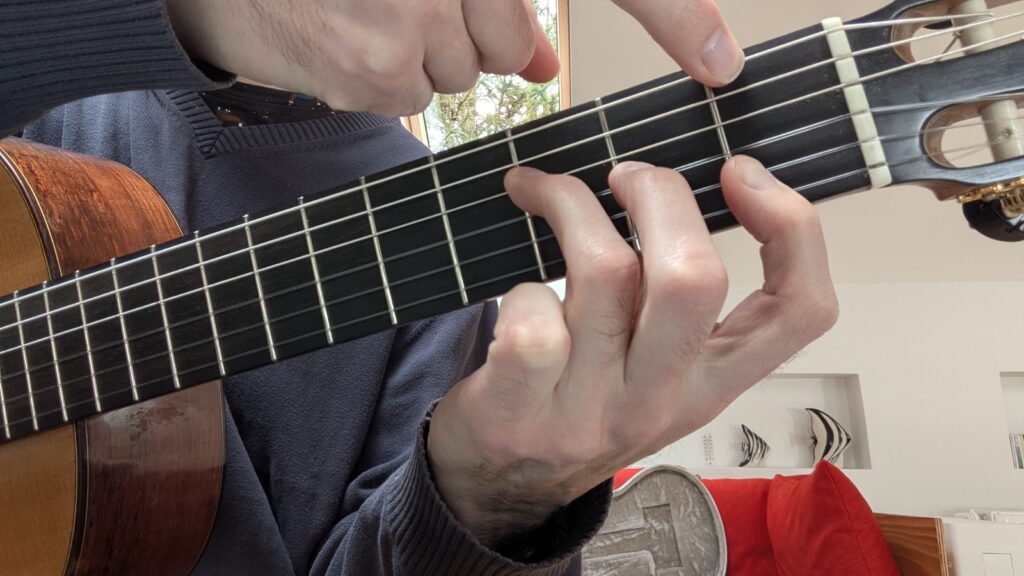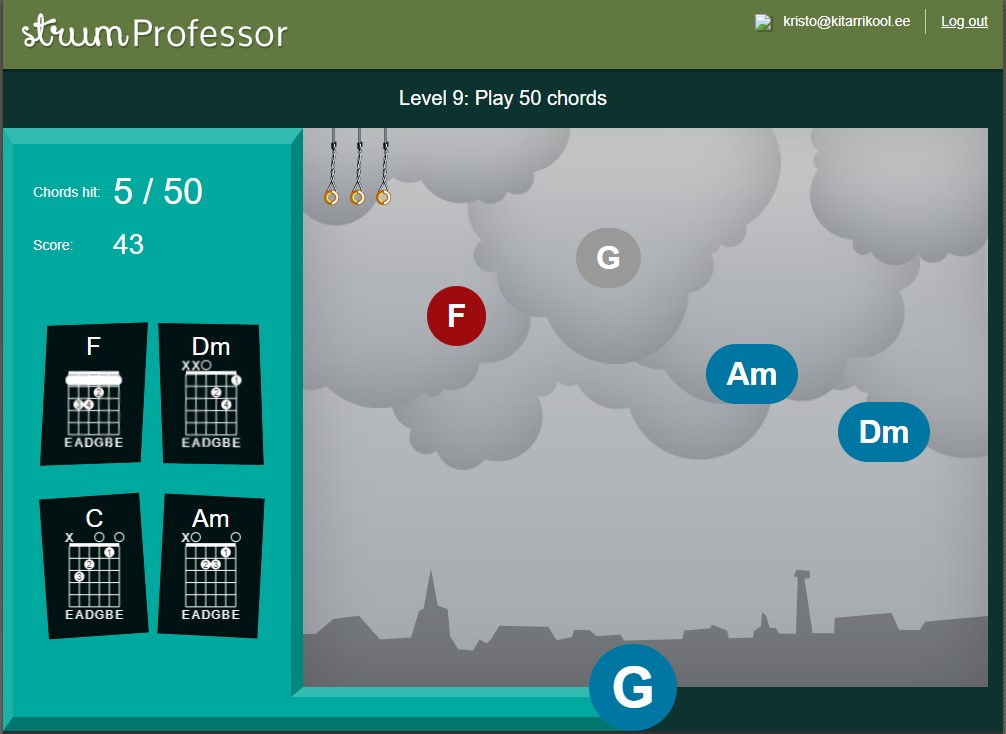This post is based on actual data from the Strumprofessor game, where players practice chord changes in real time. Since I have lost the source data and graph that illustrated the findings, I’ll focus on the key takeaways instead.
Why Is the F Chord So Hard to Play?
Most common guitar chord shapes—like G major or E minor—make use of as many open strings as possible. This makes fretting easier because fewer fingers are needed. However, the open strings on a standard guitar only provide five different notes (E, A, D, G, and B), so not every chord can include them.
Take F major, for example. It consists of the notes F–A–C, but since no open F string is available, we can’t rely on open strings to form the chord.
Common Ways to Play F Major
The two most common ways to finger an F major chord in the first position are:
- XX3211 (a smaller version without the low F)
- 133211 (the full barre chord)
At first glance, you might wonder: Isn’t there already an open A string on the guitar? Why can’t we just use it?
If we try to include it, we end up with 103211, which isn’t playable for most people because we simply don’t have enough fingers to press all the necessary notes (see the photo below). The solution? The barre technique, where we use one finger to press multiple strings at once.

What Makes the F Chord Challenging?
There are two key reasons why the F chord is harder than most beginner-friendly chords:
- It requires four fingers instead of the usual two or three found in basic chords. The thumb must also press harder than usual to support the hand position.
- It introduces the barre technique, meaning one finger (usually the index) must press multiple strings at once.
Does the F Chord Actually Slow You Down?
Based on data from Strumprofessor, players take 60–70% more time to switch to an F major chord compared to switching to E minor. This confirms what many guitarists experience—chord changes involving barre chords are noticeably slower when first learning them.
Why You Shouldn’t Fear the F Chord
Many beginners get frustrated and even quit playing guitar because of the dreaded F chord (and similar barre chords like B major or F# minor). But here’s the truth:
- When you first start playing, every chord feels difficult—until your fingers get used to the movements.
- The same applies to the F chord! It only feels impossible at first but becomes easier with regular practice.
In the Strumprofessor interactive game, the F chord is introduced at Level 8, right after all the basic open chords. If you want to challenge yourself earlier, you can use the custom level editor (unlocked after completing Level 1) to add F major to your exercises.
So don’t let the F chord stop your progress—keep practicing, and soon, it will feel just as natural as the rest! Alternatively, switch to ukulele 🙂
Edit: I am no longer among the owners of the Strumprofessor game, but it seems to be still up and running.

